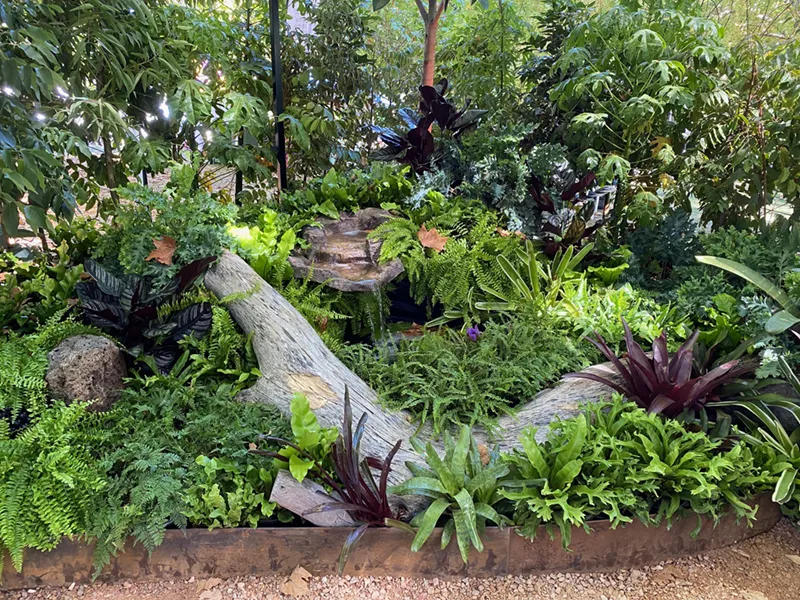What a year! It’s only Autumn, if it were ever the time to ‘stop and smell the roses’ that time is now! A great escape can be to take a wander through our gardens. We can look at our roses and take our mind off things for a brief while.
Roses are a magnificent addition to a garden. They are a plant that can suit many different personalities, styles and wants. This is due to their variation in flower shapes, sizes, colours and growing habits, their ability to be grown in the ground or in pots, different soil mediums and temperature zones. Their only limiting factor is lack of sunlight.
For those of you that believe roses are difficult and are hard to maintain, here are some ‘Autumn to-dos’ and also some interesting culinary recipes you can try.
Autumn brings out more intense colour and fragrance in the rose flowers. However due to the night temperatures cooling down and the day temperatures remaining warm, this can also create some fungal problems.
Here Are Some Hints to Get the Best Out of Your Roses:
Planting
It is now the ideal time to plant roses. The soils are still warm enough to encourage root growth before winter and the days are cool enough to work in. By establishing the roses now, the roots will be ready to produce spectacular growth and flower displays when Spring arrives.
Fertilising and Mulching
As the soils get cooler into Autumn, the root zone will not work as efficiently. To give the roses a boost, it is safest to use a short term organic fertilizer. I recommend products such as an ‘organic cow manure’ or ‘Organic Life’.
At the same time adding a soil improver ie ‘Active Grow’ and a sugar cane mulch, will reinvigorate tired soils. This ensures your plants are healthier, producing brilliant colour and increased yields whilst suppressing weeds and retaining moisture.
This combination works for both roses in the ground as well as roses in pots.
Pruning
This is the time to ‘dead head’- light prune only. A light pruning or thinning out can be done now if desired to take some stresses off the plant and allow more valuable light in.

Fungal and Pest Problems
Hot days and cool nights, are a perfect breeding ground for fungal diseases, particularly blackspot and mildew. Roses are very clever, there mission in life is to produce a flower. To do this they stop supplying the older leaves with any nutrients and put all their energy into the new growth to produce a new flower. Consequently you seldom see blackspot on the new growth of a rose.
The older leaves will go yellow and drop off anyway, and are a likely target for fungal spores in Autumn conditions. (Imagine not having any ventilation in the bathroom, mould spores would appear very quickly).
Stressed plants are also susceptible to mildews which like the cool moist autumn nights. Aphids may also appear on warm days. To treat both the fungal and pest problems, horticultural sprays are recommended i.e eco-neem,eco-fungicide etc.
Curl Grubs
It is time to be on the lookout for curl grubs. If found and left alone, they will be detrimental to the rose as they eat all the fine root hairs of the rose (and other plants). However they are easy to eradicate once detected.
How do I find out if I have them?
Easy, place an old pot, paver or doormat next to the plant that you suspect may be affected by them for 24hrs. Then remove and scratch around the surface with your finger. If they are there, one or two would have come to the surface. (If you find one, there are likely to be 20 – 30 eating the roots.) Next apply water as a drench and apply preferably a liquid grub killer (i.e eco-neem).

Now Time For Some Fun
Two easy recipes to use your rose hips and rose petals, give it a go. Do not use chemical treated roses. Use those that have been treated with horticultural sprays.
Rose Hip Tea
A beverage that can be enjoyed either hot or cold.
Step 1. Harvest and clean rose hips. Lay them out to dry, once dried remove the stalks and stems (tops and tails).
Step 2. Air dry. Somewhere dry and dark. They are ready when they have shrivelled up and feel completely dry when you pull one apart.
Step 3. Crush. Use a mortar and pestle, you want the hips to remain chunky.
Step 4. Sieve. The seeds are fine, it’s the hairs you do not want. They can be irritating to the throat.
Step 5. Storage. Store them in an airtight container until required.
Step 6. They are now ready to make tea and enjoy.


Rose Petal Sugar
The ratio of sugar to petals varies depending on how concentrated you want the rose sugar to be. If unsure, start with 1 cup sugar to ½ cup rose petals.
A great addition to rose hip tea.
Step 1. Add white granular sugar to an airtight container.
Step 2. Add fragrant red or dark pink petals. Remove the white bit from the bottom as can be bitter.
Step 3. Seal the container and leave in cupboard for about a month to absorb colour and flavour.
Step 4. Sieve. Remove the dried petals
Step 5. Enjoy.













